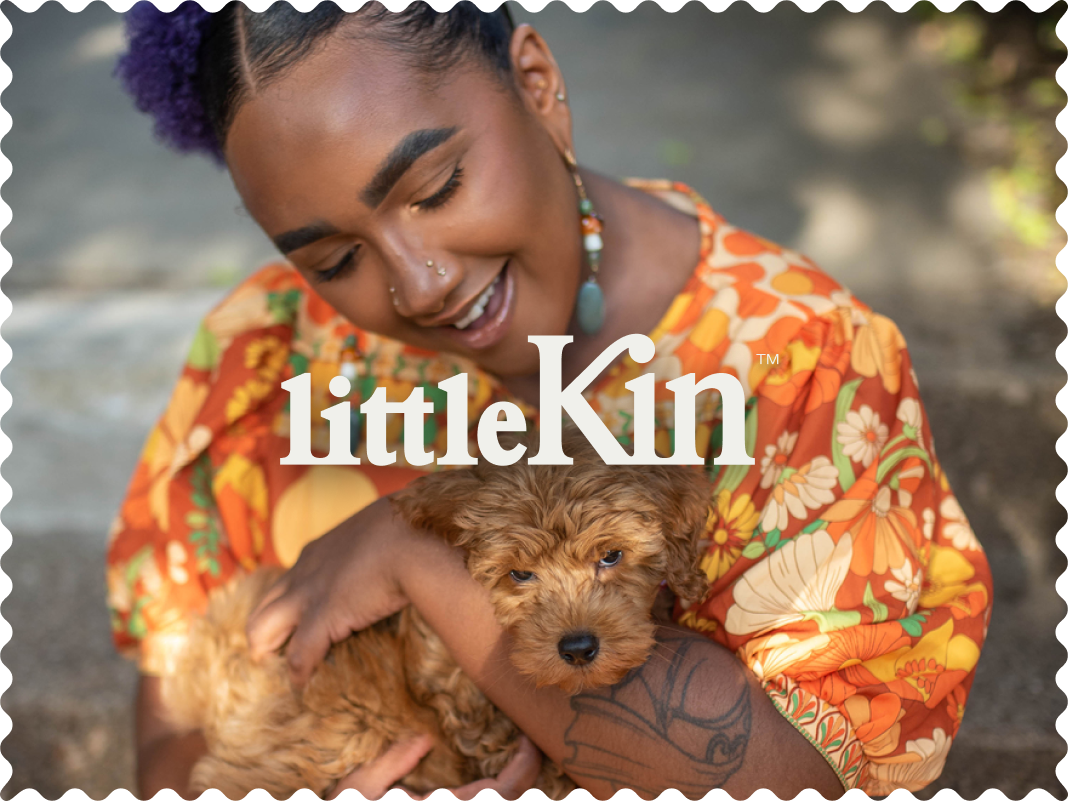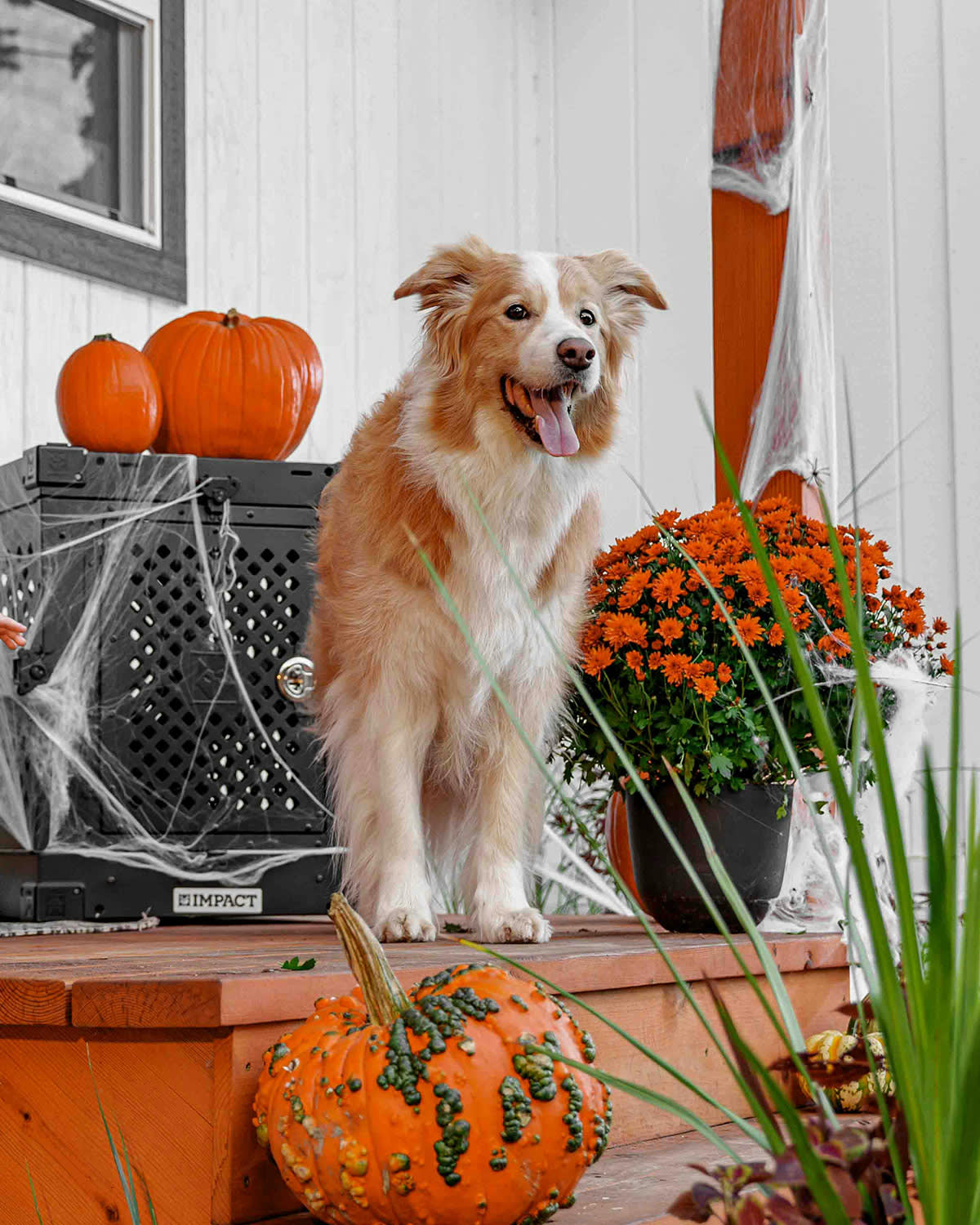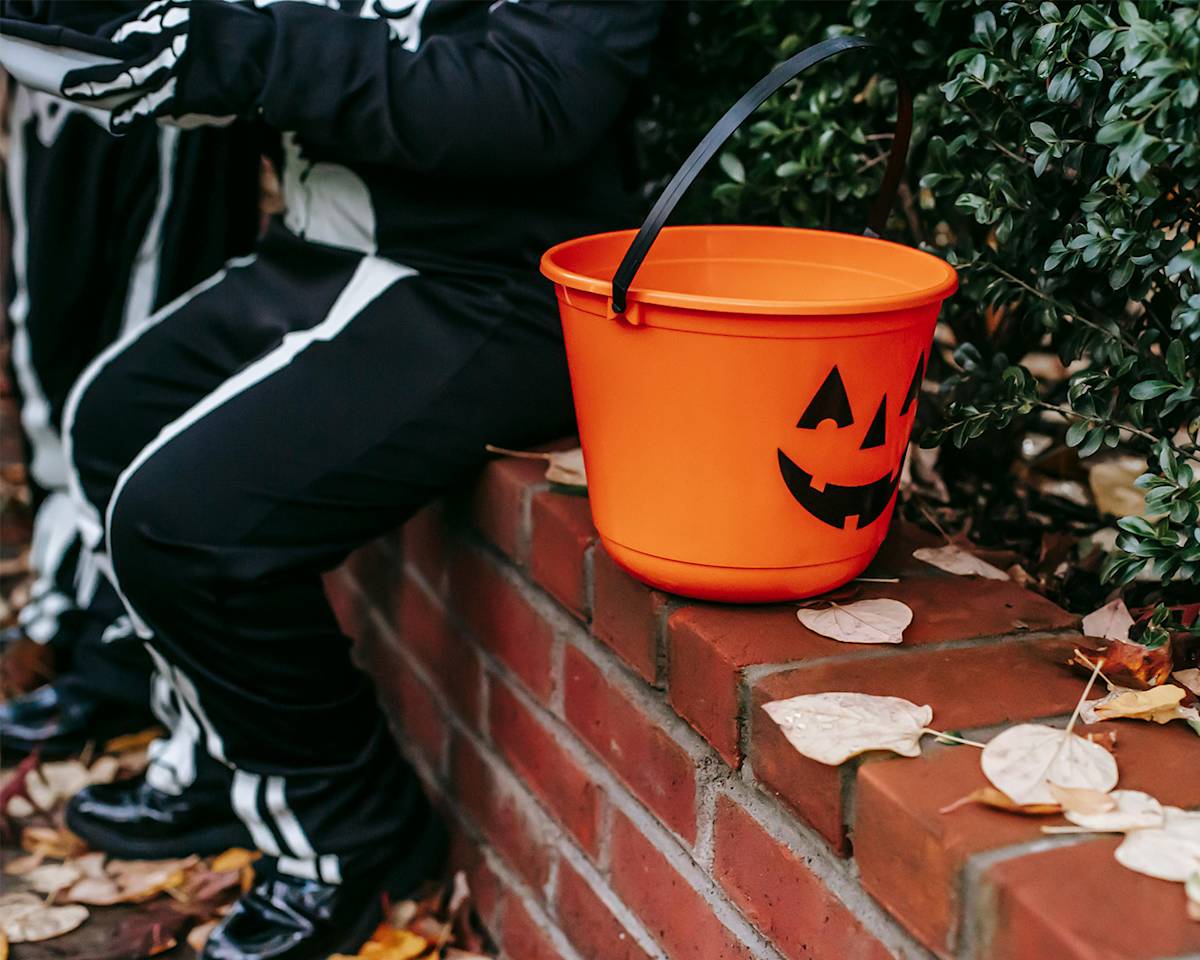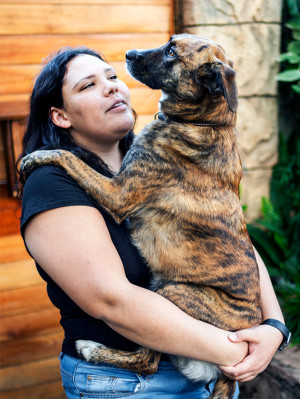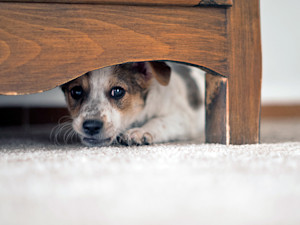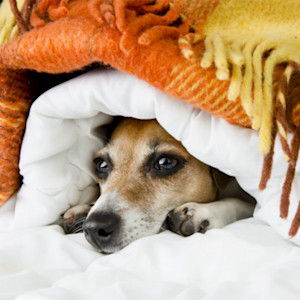6 Things Responsible Dog Parents Do Before Halloween
Pre-Halloween training tips to save your sanity
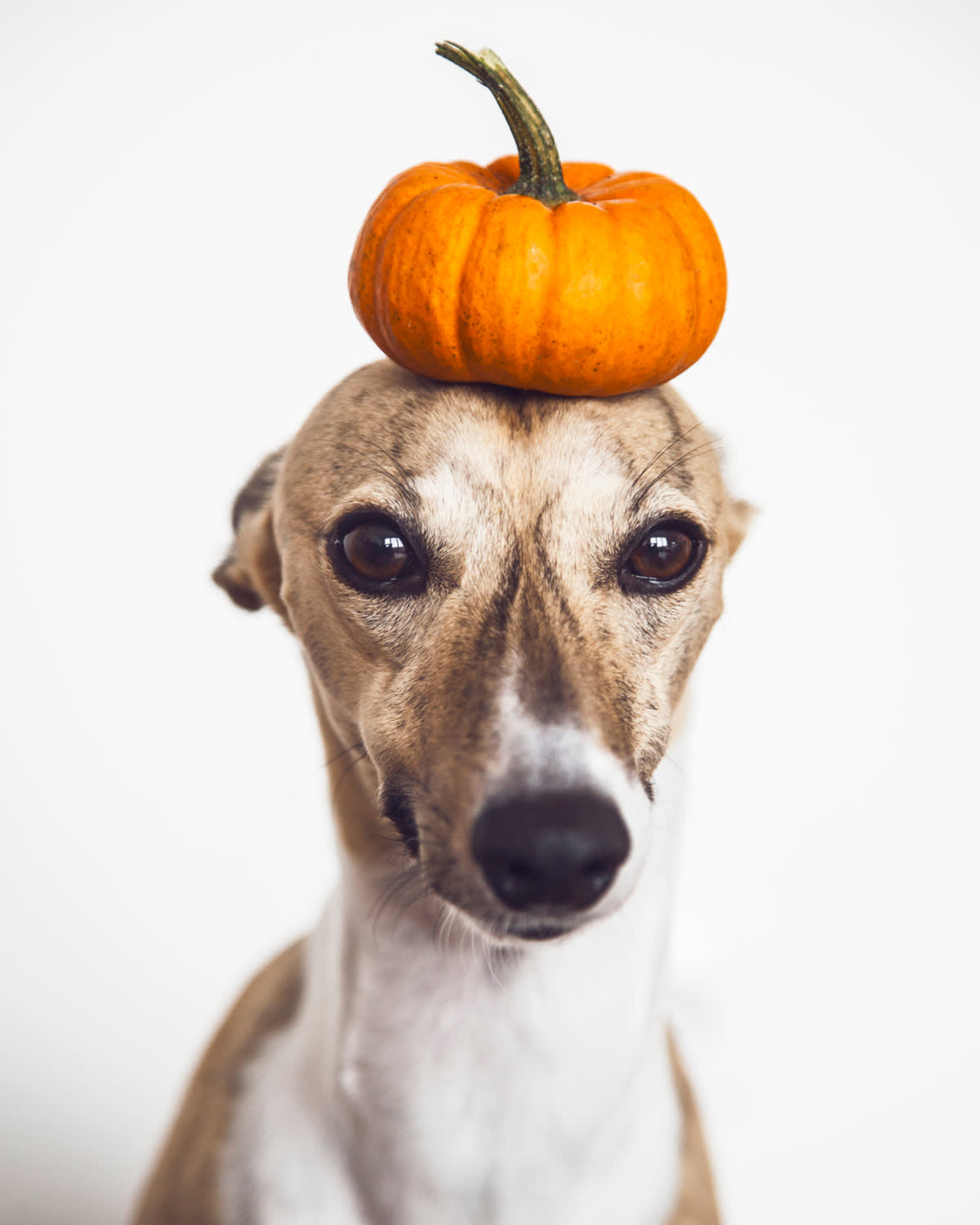
Share Article
Halloween is on the way, and although this is a fun-filled time of spooktacular excitement, dogs can often find things a little too exciting and overwhelming. On Halloween night, there's much more noise to contend with than most dogs are familiar with – and, let’s be honest, even us humans find the constant doorbell cacophony a bit much sometimes.
That doorbell symphony constantly ringing, the strange sight of children and adults dressed in confusing costumes, and excited squeals filling the air can make for a pretty challenging experience (dogs and humans alike). Here’s how we can help our pups navigate this chaotic night of fun and frolics, whilst ensuring a safe and enjoyable night for all.
Pre-Halloween training
Making time for some pre-Halloween training is an excellent way to ensure that things run smoothly on the night (because nobody wants a meltdown – canine or human). We’ve got some top training tips from experts to help you understand exactly how to get started.
Introducing settle mats
IMDT (Institute of Modern Dog Trainers) dog trainer and behaviour modification expert James Hareopens in new tab suggests spending some time teaching your dog to ‘settle’ before the hustle and bustle of Halloween night arrives. A ‘settle’ mat, sometimes known as a ‘place’ marker, is simply a thin dog mat or even blanket that when directed to, your dog knows to calm down and chill out. Think of it as a safe haven in the midst of all the madness.
“Teaching your dogs to go to a settle mat is a great way of preparing them for the busy Halloween visits,” says James. “It’s also good for those who feel they may not have time to put more in-depth control and management in place immediately.” (No judgement if you’re reading this on 30 October.)
“Stand by the mat. When your dog steps on the mat, tell them ‘good job’ (or ‘yes’ or other verbal alternative), then drop a treat on the mat,” explains James. “Repeat this process lots of times. After a while, you could cue a ‘sit’ or a ‘down’, and build up duration as to how long the dog is on the mat. Simplistic steps are key to start with (without the addition of noises). Longer term, you would need to pair the behaviour with the doorbell ringing or the door knock happening.”
Whistle training
If you want to add another element to this training, then introducing a whistle could be a valuable tool in your training repertoire in general – and one that can certainly be utilised on Halloween as an audible cue when the doorbell is having its main character moment.
James explains this training in easy-to-follow steps:
Start close: with your dog very close to you, blow the whistle and give them a treat immediately. We want to pair the association that whistle = food (a philosophy we can all get behind).
Move to the mat: standing next to the settle mat, whistle, and drop a treat onto the mat.
Add the cue: complete step 2, and as soon as your dog touches the mat, add your verbal cue, say good job and give them a reward.
Create distance: stand away from the mat, blow the whistle, say “mat”, and if your dog goes to the mat, tell them good job and reward.
The real test: ring the doorbell, blow the whistle, and ask your dog to go to the mat. If successful, praise and treat. If at any stage your dog doesn't complete the task, you may have simply moved too fast – back up a step or two.
Desensitisation
“If this will be your puppy's first Halloween or your new dog’s first one with you, then some desensitisation in advance can help,” says Joe Nutkinsopens in new tab, Accredited Dog Trainer, Behaviourist and Certified Canine Fitness Trainer. “Try playing sounds of people talking and laughing from a sound app or YouTube online.”
“Ideally, if playing these on your phone, put it on the windowsill (or near your door), as that is where the sound will likely come from on Halloween,” adds Joe. “You should work on lots of fun and positive playtime while the sounds are on low in the background. Start with short sessions and gradually increase the volume so your dog associates the sound with fun.” It’s like exposure therapy, but with more treats and tail wags.
Using interruption
Interruption can be the most effective tool both at the time and long term, and could be fantastic to utilise on Halloween. This process does initially require a lot of input from us, but it’s worth the effort (promise!).
Joe outlines the basics:
Any time your dog responds to sounds outside, whether up at the front window or not, you must interrupt. This can be by making a noise so your dog looks at you – rustling a treat packet, squeaking a toy, whistling or giving a clap of the hands. Try a few things to see what works for your own dog.
As soon as your dog pauses their barking to check in with you, praise and reward them, and move them away from the window/door. If there’s still noise, ask your dog to do things like their favourite trick, sit, stay or fetch a toy.
Once you have finished that session, let your dog know they’re finished with an ‘OK, all done’, and get on with your day.
As soon as your dog responds to another noise outside, interrupt again using the same method.
Don’t limit this training to only when your dog barks at the window. Use it for garden barking, passing vehicles or any other running commentary your dog likes to provide – otherwise, they can easily ‘practise’ the barking, making it harder to break the habit in the long run.
Halloween night: training and management
Something we can do to help our canine companions understand the Halloween festivities is to actively show them that we are the ones behind the silly costumes and spooky accessories.
“Remember, costumes provide dogs with new visuals, plus different scents and even sounds,” says Joe. “Let your dog see you putting on a scary mask or new costume, so they know it’s you. Let them actively observe people wearing costumes, at a distance. If your dog is worried, simply allow them to move away, rather than trying to convince them it’s not scary.”
Teaching ‘thank you’ when noise is reacted to
For dogs who appear to be telling you something is happening outside (and want you to know about it), you can teach a ‘thank you’ cue. Ultimately, many dogs are just trying to alert you to the strange and spooky happenings to protect their pack (that’s you!).
Go to where they are barking, looking to show you have seen it, say ‘thank you’ (or something of your choosing) to let your dog know you are aware and have noted it, then call them away to do something else such as play with you and a toy, complete a favourite trick with a reward, or go into the garden for a sniff.
Gradually, you can be further and further away when thanking your dog, but they need to believe you have recognised the ‘issue’. This is a great tool for when trick-or-treaters are coming around – essentially acknowledging their security services while also politely asking them to clock off.
Reading your dog’s signals and knowing when to intervene
When answering the door to trick-or-treaters, it’s important not to assume that our dog wants to join in with the entertainment. Forcing them to do so could cause upset and anxiety, and frankly, not everyone enjoys a good costume party.
“Lip licking, yawning, turning away, wide eyes, ears pinned back, and backing away can all be subtle signs that your dog isn’t happy or is uncomfortable,” says Joe.
“Some dogs are fine with new sounds and people at the door, but for many, hearing the doorbell numerous times or people talking outside can be unsettling, making them anxious or disturbing them from resting, especially if they are unwell or nervous in general,” adds Joe. “If this is the case, then you can simply turn off the doorbell, use signs saying ‘please no visitors’, and bring your dog to a quieter part of the house.”
This will help them maintain a sense of normality – because, just like with fireworks night, big events simply aren’t fun for all dogs, and that’s perfectly OK.
However you choose to navigate Halloween this season, we hope you have a frightfully fun night, filled with plenty of tricks, treats, woofs, and licks – with just the right amount of controlled chaos for everyone involved.

Becky Bowden
Becky is a freelance journalist based in the southwest of England where she is the proud dog mama to Cookie, the Welsh Sheepdog. Becky enjoys writing about all things entertainment and lifestyle. When she’s not writing for Kinship, you can find her contributing to publications such as Cosmopolitan, OK!, Yahoo! UK and The Telegraph.
Related articles
![Picture of close up scared chihuahua in their bed]()
75% of People Can’t Spot When Their Dog Is Worried – Are You One of Them?
Rolling on their back doesn’t automatically mean they want belly rubs...
![Young woman holding her large dog in her arms outdoors.]()
What to Do When Your Dog Is Even More Anxious Than You Are
Did you get a dog for emotional support and now they are the one who needs it?
![Dog hiding under bed]()
Does Your Dog Freak Out at Loud Noises? Here’s How to Help Them
Is your dog scared of every little noise? Here’s how to turn the volume down on their anxiety
![Dog hiding under orange blanket]()
Firework Fear? Here’s How to Help Your Dog Stay Calm This Season
From calming supplements to creating safe spaces, here’s how you can prepare your pup for firework season
